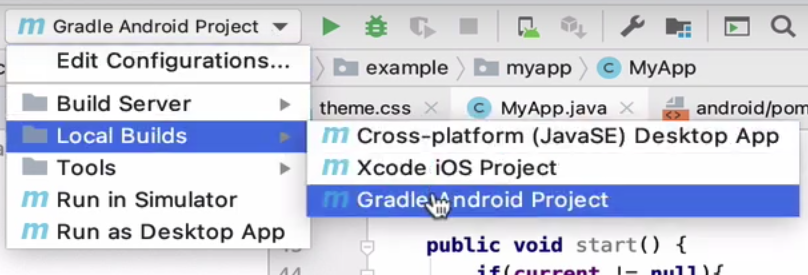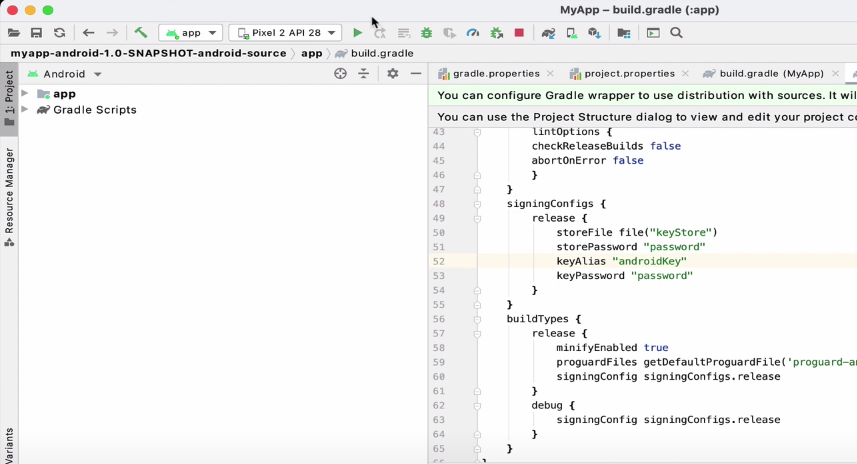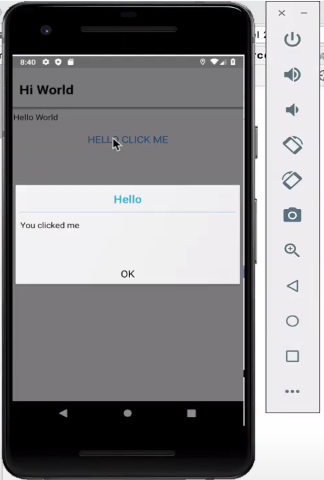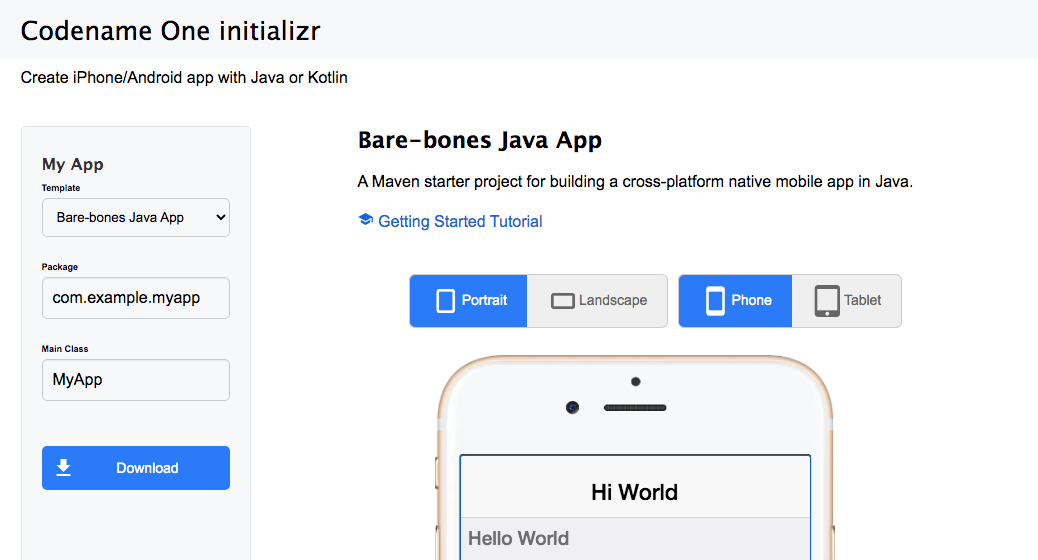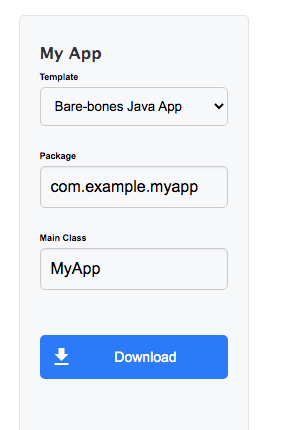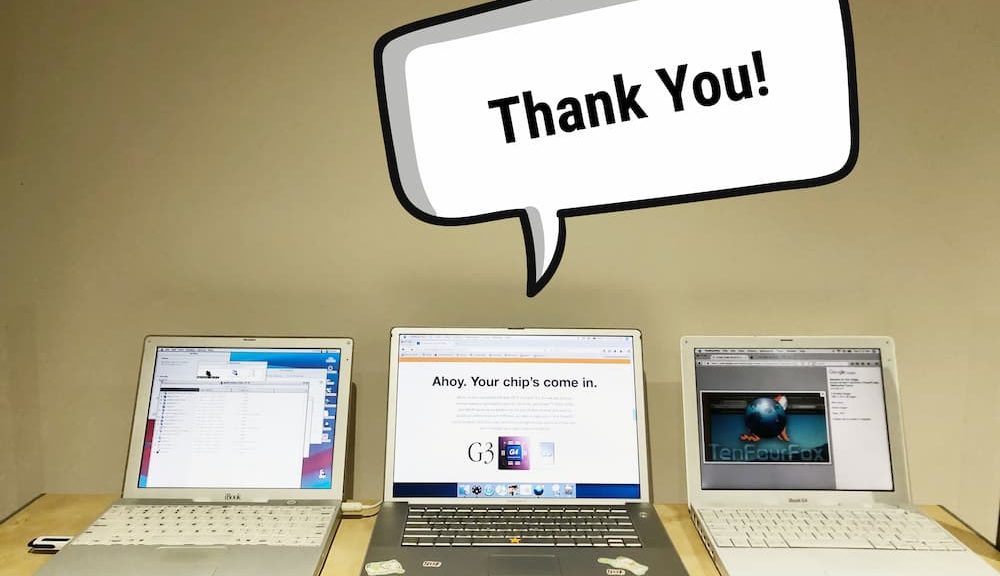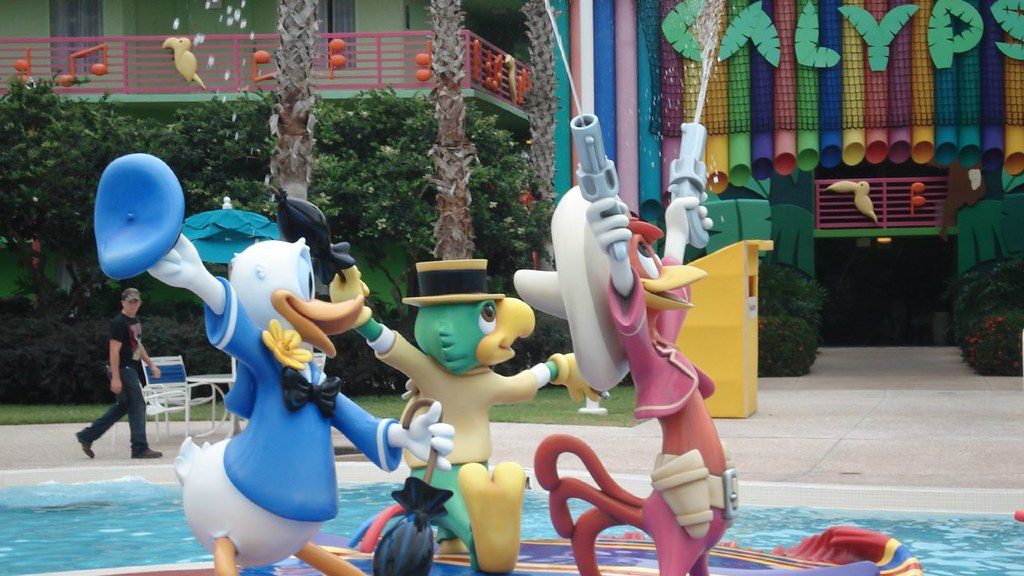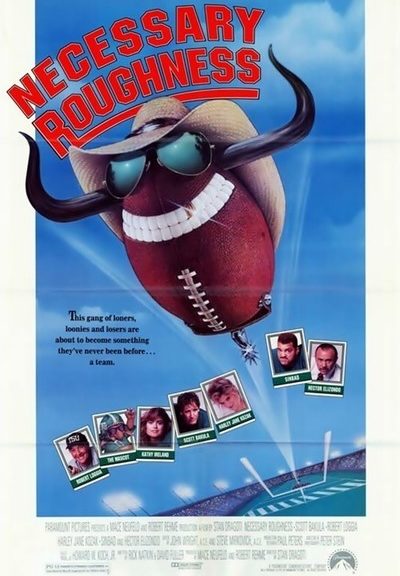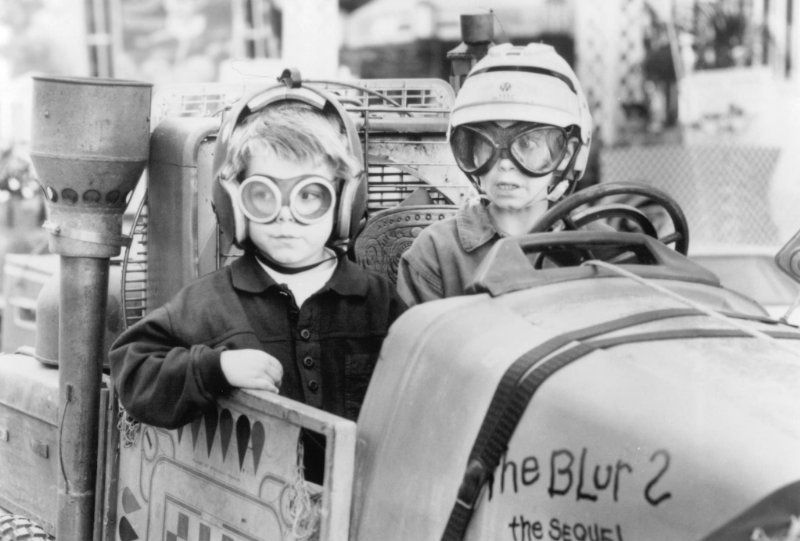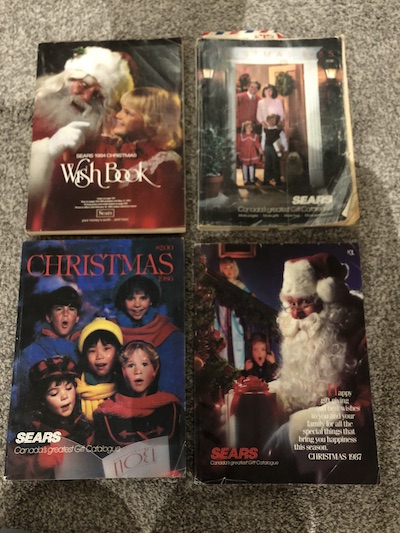Beverly sorted the DVDs in the furnace room a couple of weeks ago, and, as a result, there is a stack of DVD cases sitting on the floor of our basement. Topmost in this stack is “Necessary Roughnessâ€, the 1991 football comedy starring Quantum Leap’s Scott Bakula with a talented supporting cast that included SNL’s Rob Schneider (“Fumblaya, Fumbleroosky!â€, Deuce Bigalow, etc…), Sinbad, Jason Bateman (Arrested Development), and lots of other familiar faces from that era. Seeing that case reminds me of the first time I saw the film at Willowbrook 6 cinemas on its opening night, way back in 1991.
Ads featuring the catch phrases and slapstick moments from the film started to blitz the airwaves late in the summer between grade 6 and 7.
“I can’t wait to see thatâ€, I said to Ezra, probably while watching one of its TV commercials. “It looks like Major League, but for football.â€
“Sergeant Fumblina Wilkerson fumbles the ball!â€, he replied, quoting the film.
We recited a few more of the catch phrases, laughing at each other after each impression.
“You should ask Christina to goâ€, he suggested.
I paused for a moment to ponder the practicality of this idea. Most people don’t know this, but Christina was my first verified reciprocated crush. In case you’re not familiar with that term, allow me to explain.
To borrow a phrase from the Wonder Years, a “crush†is when you “like like†someone.
A reciprocated crush is when you have a crush on someone, and they also have a crush on you. However, you may not know that they have a crush on you – and they may not know that you have a crush on them.
A verified a reciprocated crush is when you have a reciprocated crush, and both parties of the crush are aware of it.
I had had crushes before Christina, and I may have even had reciprocated crushes (unbeknownst to me), but she was my first verified reciprocated crush.
Our story began four months earlier, in Mr. Wiebe’s grade six class. Christina was new to the school, joining our class mid-way through the year. I was just becoming “interested†in girls for the first time, but I didn’t have any clue how to navigate around the obstacles that were blocking the “friend-zone†exits. Christina, being new, was not afflicted with this complication, which was a big feature. And she was pretty.
I decided to make “my move†one May afternoon after school. I was doing a tour of duty as the desk monitor, so I had to stay behind for a few minutes after class with a clipboard to inspect all of the desks to make sure they weren’t messy. If I encountered a “messy†desk, I was entitled to give them a “ticketâ€. I don’t recall if I made my quota that day, but by the time I was finished, there was just me and one other student left in the class. This was my chance!
I placed my clipboard on Mr. Wiebe’s desk, then proceeded to the cloak-room, where I slowly placed a few things into my bag and donned my jacket. I paced myself so as to exit the classroom at approximately the same time as the other student. We descended the steps outside the door and continued to walk together towards the bike racks at the front of the school.
And that’s when I made my move.
“What do you think of Christina?â€, I asked Ben (the other student).
Sure, I could have just talked to Christina directly, but that would have been risky! (What if she said “noâ€, I just don’t think I could take that kind of rejection! — George McFly, 1955)
I call this move “planting the seedâ€. It didn’t come from any playbook. I was freestyling.
“Why? Do you like her?â€, he replied in an “oooh†tone as if he had a script.
I made a dramatic pause, to make it seem like I was reluctant to divulge this information. Then I responded with “Maybeâ€.
“Oooh. That means that you do like her.â€, he gently teased.
“Well I guess soâ€, I confirmed. “But don’t tell anyoneâ€.
Mission accomplished! Now all I had to do was sit back and wait until, inevitably, Ben divulged my secret to someone.
Amazingly, things unfolded exactly as planned. Approximately one week later, I was approached by a couple of girls on the football field with tidings of great joy.
“Do you like Christina?â€, they asked. “Because she likes you, and she thought that you liked herâ€.
That was good enough for me. I confirmed to them that I, indeed, liked Christina, and they were free to share this information with her.
Messengers dispatched with my seal, I was free to resume the lunch-time football game that was underway.
Now, if my “playbook†were a physical book, this is the point where I would turn the page only to discover that the next page is blank. Then I would fan through the remaining pages until I reached the back cover, to confirm to my horror, that there were no more plays in this book. I didn’t think I would get this far, and now I was something of a victim of my own success, as I didn’t have any idea how to proceed.
“Should I go talk to her?â€, I thought to myself. That would be too eager. Eventually I would have to talk to her, but for now, I reasoned, it was much better to limit communication to smiles and waves. That way I couldn’t say anything wrong. I mean, I might as well stick to the fundamentals that got me this far. I would let my football do the talking. Surely she would notice all of the touchdowns I was scoring during lunchtime games, and that would impress her.
I basked in the glow of this new world for the next couple of weeks. Everything was going smoothly. I still liked Christina, and, as far as I knew, she still liked me, and that was good enough for me. I planned to wait until the perfect moment to spring my first conversation on her. That moment came during the school field trip to Stardust roller rink. I waited until the day was almost over, then I rolled up beside her and asked if she wanted to skate. She said yes.
I held out my left hand, and we began to skate together under the disco lights. Finally the time was right for our first conversation to occur.
I looked at her and said “I don’t really like this songâ€. And she looked back into my eyes and said “What??!, I can’t hear youâ€.
I replied with “nevermindâ€.
With the pleasantries out of the way we proceeded to skate around the oval, as if we were the only two skaters on the floor. I learned later that Ezra and Stephanie were skating behind us for the whole song laughing (secretly) at us.
After the song ended, we went our separate ways.
I learned a few weeks later, through the grapevine, that she didn’t like me anymore. When I inquired why, I was told that she had said that “we had nothing in commonâ€.
“How could she possibly know that we had nothing in common?â€, I thought to myself, in dismay. “We had never even really talked.â€
I made a mental list of the things that I knew about her to see if I could identify any common interests. I knew that she liked horses. At least I think that she liked horses. I didn’t really care for horses. Didn’t hate them, mind you; I just wouldn’t call myself a horse person.
“Wellâ€, I thought, “maybe she’s right. Maybe we are just too different.†This was a bitter pill, but I had no choice but to swallow it.
Now that you’re up to speed on the “Christina†back-story, I’ll return to Ezra’s suggestion that I should ask her on a date.
“That would be too weirdâ€, I said to Ezra. “My dad will ask who I’m going to the movie with, and if he finds out it’s a girl, he’ll make fun. Why don’t we do a double date thing? You can ask Suzanne or Stephanie, or someone else to go with you, and then we’ll all go together.â€
Making it a double date would accomplish multiple things. Firstly, it could be presented in a more casual light, so I wouldn’t have to stand on the precipice of rejection. Second, it was possible that Ezra could open the negotiations, and save me the agony of having to “ask†entirely. And finally, it would make the experience on the date less stressful, as I wouldn’t be relied upon to participate in every conversation. I could chime in when I felt comfortable, but I wouldn’t bear responsibility for long awkward silences.
Ezra agreed, and we put the plan into action. The next day at lunch time, Ezra informed me that he had talked to a few girls, and that the movie was on. Only, it wasn’t going to be a double date as we had originally planned. Four or five girls in the class had already expressed interest. It was just a matter of finding the right matches, since this was going to be a “date nightâ€. Over the next few days matches started to form, and before I knew it, our little double date had grown into double digits, with 5 or 6 couples pledging to attend.
This little idea had transformed into something like a highschool dance with boys trying to summon the courage to ask a girl, and girls patiently waiting to be asked.
A week before the big day, I still hadn’t asked Christina. I’m not sure what I was waiting for. Perhaps I was waiting for a message from the heavens to assure me that the time was right. Unfortunately, when the message finally came it was different than I expected.
“Steven, you better hurry and ask Christinaâ€, Ezra warned me during recess. “I heard that Rob just asked her, and that they are going together.â€
“What?!!†I exclaimed, experiencing a small amount of genuine shock. This was my fault. I had waited too long. Part of me was relieved as I was now absolved of my obligation to ask her myself. No rejection required, and I didn’t technically “chicken†out. It was out of my hands. Oh well.
But then, at lunch time, opportunity reared its ugly head. I was warming up in the gym for lunch-time floor hockey, when Rob approached me.
“Steve, can I talk to youâ€, he asked.
“Yeah, sure, what’s upâ€, I pretended to not know what this was about.
“I heard you wanted to go to the movie with Christinaâ€, he said. “If I had known that you wanted to go with her, I never would have asked.â€
“That’s OKâ€, I assured him. “I was just too lateâ€.
“If you want, I can cancel with her, so that you guys can goâ€, he offered.
I had already made peace with my loss, but this offer seemed like it was too good to pass up.
“Wow! You’d do that?â€, I replied. “Thanks manâ€
That set the stage for my second conversation with Christina. That afternoon, she pulled me aside in the back of class. “Can I talk to you for secâ€, she asked.
“Sureâ€, I replied.
For a brief instant I thought that this would be the magical moment when we would, once again, profess our mutual affection for each other, and make it official that we would be attending the movie as a couple.
I was wrong.
“How dare you make a deal behind my back!â€, she said sternly. “I am not some piece of property that you can trade.â€
She said other stuff too, along the same lines.
The gist of her monologue was that we weren’t going to be going to the movie together. She would be going with Rob per the original plan.
I handled this rejection with grace, since I had already previously accepted this the first time I heard it. And, I could see her point. But now I faced a new challenge. With only 4 days to go until the movie, I still didn’t have a date, and now I didn’t even have any prospects. I suppose I could have just gone by myself, but that would have gone against the entire concept of a “date nightâ€. Everyone had to have a date.
Luckily, on Tuesday, the universe intervened. Suzanne suggested that I should go with Gail because she also didn’t have a date. Gail was nice and pretty, so that sounded fine to me.
Friday was movie night. My dad dropped Ezra and I off at the Willowbrook 6 box office for the early show (7pm-ish). Once inside the door, we saw Suzanne, and a couple of other kids from our group standing watch in the lobby.
“Necessary Roughness is fullâ€, she informed us. “Only half of us can fit in there. So some of us are going to watch City Slickersâ€.
To paraphrase the late great Hannibal Smith, I hate it when a plan falls apart. I had seen City Slickers a few weeks prior. It was a good movie, but I didn’t want to see it again.
A lesser man might have lost composure upon hearing this news – screamed, cursed, pushed over a popcorn wagon. But I somehow managed to keep it together, while Suzanne continued to brief us on the situation.
“… We have a row blocked off in Necessary Roughnessâ€, she continued, “and there are two seats left….â€
“Hallelujah!â€, my inner voice screamed. “It’s too bad we have to split up, but at least I can still watch the movie I came to see.â€, I thought. This was a silver lining I could hang my hat on.
But then, the boom dropped.
“Gail is already in City Slickers.â€, Suzanne added. “She’s saving a seat for youâ€.
There is a scene in Good Will Hunting where Robin Williams’ character is telling Matt Damon’s character how he met his wife. He had been entering the gates of Fenway park for the historic game 6 of the 1975 world series, when the most beautiful woman he’d ever seen caught his eye as she was walking away from the stadium. It was love at first sight for him, so he relinquished his ticket, and went after her. Damon’s character, astounded by this, asks if he ever regrets this decision. “Not even when she (eventually) died of cancerâ€, he responds. (Or something to that effect).
Good Will Hunting didn’t come out until 1997, so it was not available to my decision-making algorithm on this 1991 Friday night. Had it come out ten years earlier, perhaps it would have granted me the perspective to see beyond my immediate desire to watch Necessary Roughness. Perhaps I would have chosen to join my date in City Slickers, and it would be such a life changing decision that I would never have any regrets about what I had sacrificed to sit with her. But it didn’t, so I was wholly unprepared for this dilemma.
I could hear the trailers start to play, so I knew I had to make my decision quickly. I mean, I guess I was sort of obligated to sit with my date…. But on the other hand, it didn’t seem fair to ask a man to suffer through a movie that he had already watched when could be watching a new movie – one that he really wanted to see. Furthermore, I continued to rationalize, it wasn’t really like a “date dateâ€. We were all together as a group. Surely Gail wouldn’t mind if we watched separate movies.
In the end, the decision itself wasn’t that hard for me. The hard part was telling Suzanne.
“Since I’ve already seen City Slickers….â€, I began. “I’m going to watch Necessary Roughness. Can you tell Gail?â€.
Phew! That was awkward. But it felt good to have all of the obstacles cleared. I could now proceed straight to my seat and enjoy the movie with a clear conscience.
Necessary Roughness is more than a movie to me now. It is a time capsule that transports me back to that Friday night in 1991 when we were still kids, but were beginning to explore the waters of the next frontier for the first time.
